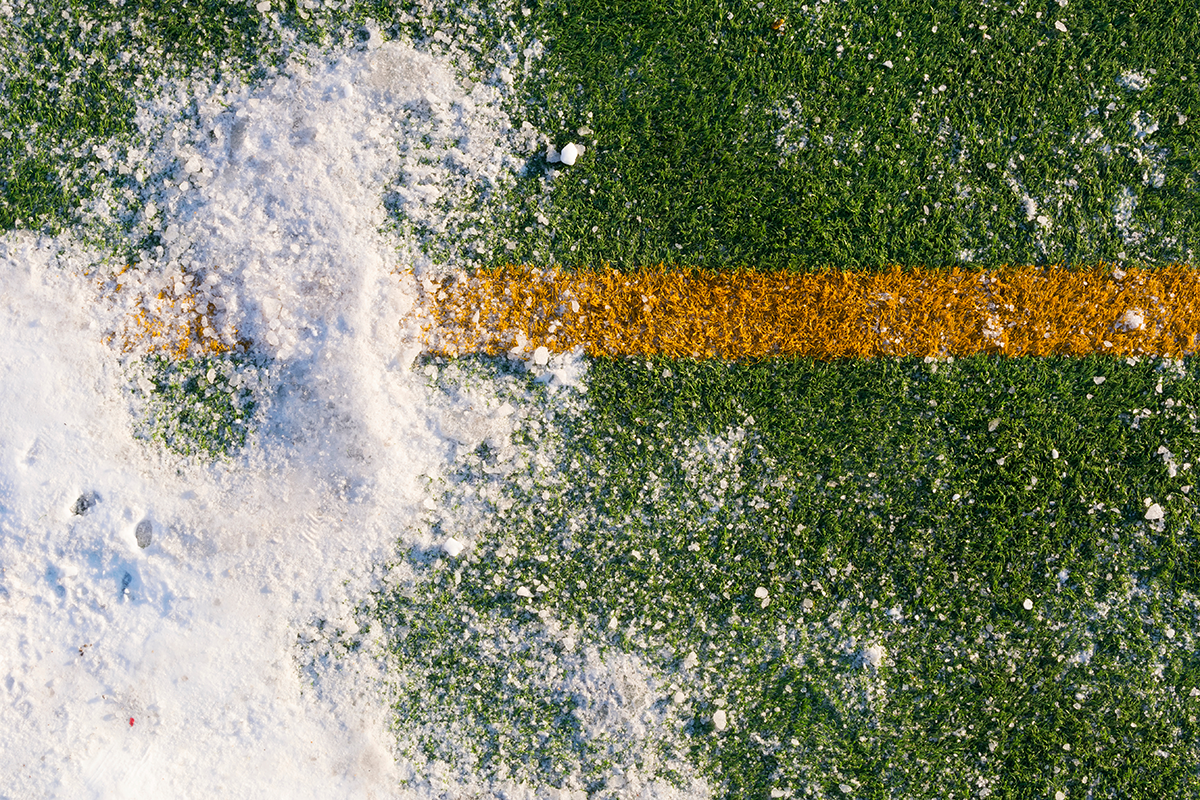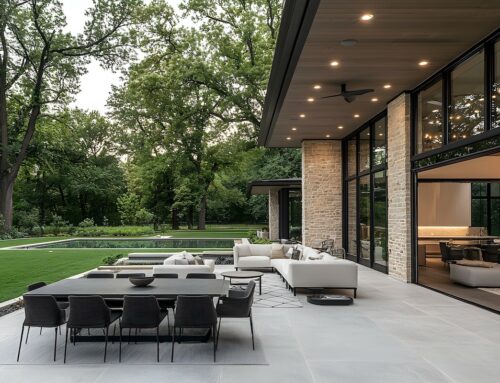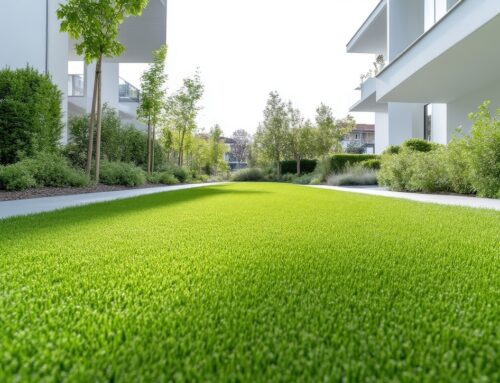Last Updated on February 28, 2022 by ReTurf
If you’ve decided on artificial grass for your property, you already know about the considerable water (and cost) savings.
The fact that your grass will look perfect year-round without requiring rain or irrigation is one of the great things about synthetic grass.
So when your grass doesn’t need water—what happens when it rains?
Artificial Grass, Real Rain
First of all, high quality, professional-grade artificial grass will stand up to any amount of rain.
Even if it’s raining cats and dogs for days and days, you won’t have any problems, as long as you’re dealing with durable, high quality turf that was installed correctly.
Installed properly, artificial grass has great drainage.
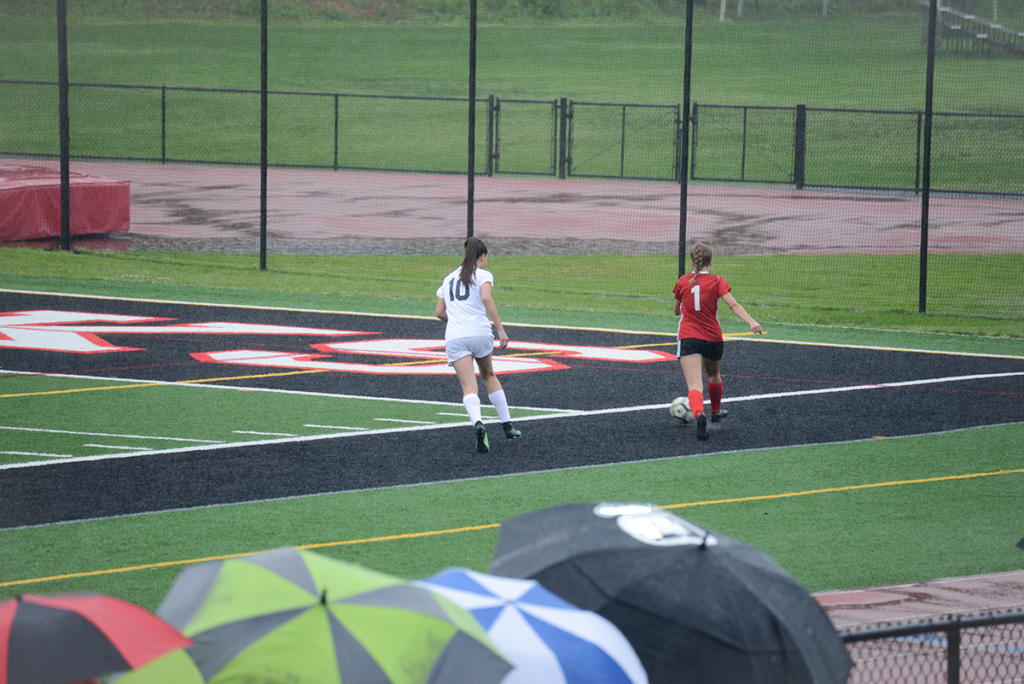
You might expect synthetic turf to not drain as well as real grass since it doesn’t need to “drink” water—but it drains just as well or even better than regular grass.
As long as it has been laid correctly, on top of the right kind of substrate, with a supporting drain system (french drain for example) you should have no problems with drainage even after days of heavy rain.
Even with sustained wet weather, the risk of big puddles of water forming is less than on regular grass.
When you have good drainage, you can rest assured that when you’re looking outside and seeing torrential rain, your yard is simply being “washed.” Rain helps to keep your turf looking great, and naturally takes care of some of the already-low maintenance that turf requires.
When there’s extremely heavy rain beating down for a very long period, it’s possible that your artificial grass blades might start looking a little compacted. If you do see any flat patches of grass once the rain subsides, all you need to do is brush the blades upward to restore their shape.
When There’s No Rain
We’ve talked a lot about excessive rain—what about the opposite?
During sustained dry weather, you can get the effects of rain by spraying your synthetic grass down with water from your garden hose.
But generally, rain or not, you shouldn’t have to worry too much about how your turf is affected—certainly much less than you’re used to with regular grass.
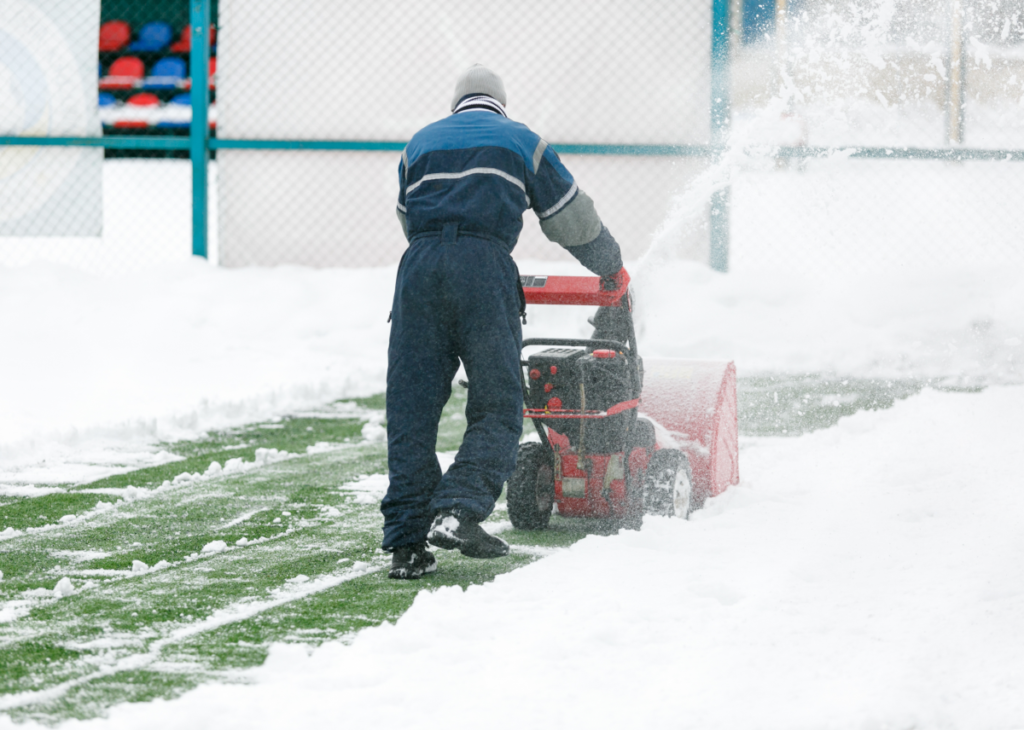
What about Snow and Ice?
Snow doesn’t generally have a big effect on synthetic turf, and it’s fine to use grass like normally when it’s covered in snow. Just keep in mind that melting snow can make things more slippery temporarily.
Don’t worry—you can simply allow it to melt, and it will drain away just like the rain once the temperature rises.
While high quality artificial grass is extremely resilient, it’s not indestructible. If your blades are frozen, they can become brittle and be broken if you walk directly on them. But in general, artificial grass isn’t affected negatively by typical winter weather conditions.
If you need the turf cleared before the temperature rises, you can do it yourself by gently clearing the top layer with a shovel, then using a brush to sweep the rest away.
In some circumstances, you can use a snowblower.
Conclusion
If you’ve been wondering how heavy rain, snow, or ice can affect synthetic turf, you don’t need to be concerned. Even in the most adverse weather conditions, your artificial grass will still be easier to maintain than regular grass!

